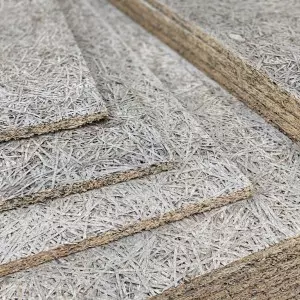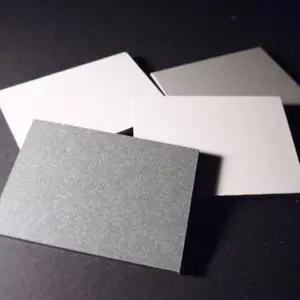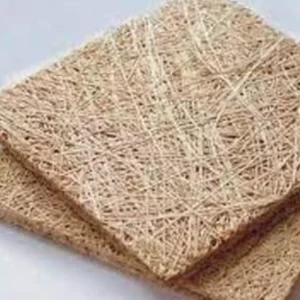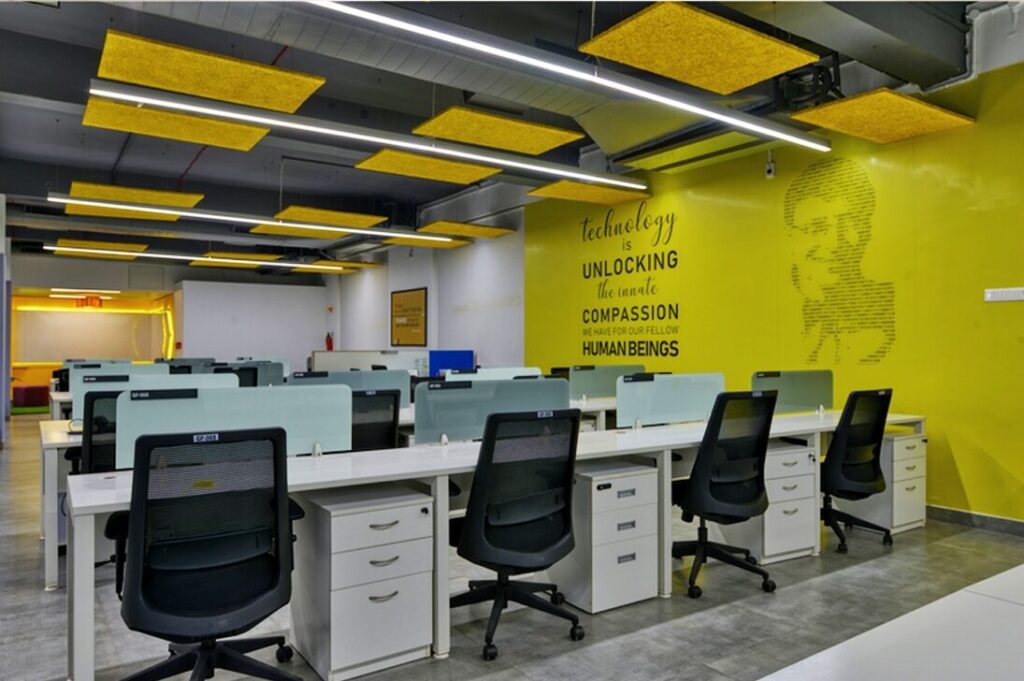Wood Wool Acoustic Board Manufacturers: A Comprehensive Guide
Introduction
Wood wool acoustic boards have gained popularity in recent years due to their excellent sound absorption properties and eco-friendly nature. These boards are widely used in various industries, including architecture, interior design, and construction. In this article, we will explore the world of wood wool acoustic board manufacturers, their products, and the benefits they offer. Whether you’re an architect, interior designer, or simply interested in soundproofing solutions, this guide will provide you with valuable insights.

1. What are Wood Wool Acoustic Boards?
Wood wool acoustic boards, also known as wood fiber panels, are sound-absorbing panels made from wood fibers and a cementitious binder. These boards are manufactured to have varying thicknesses, densities, and surface finishes, offering different levels of sound absorption and aesthetics. Wood wool boards are commonly used to reduce noise reverberation in interior spaces, creating a more pleasant and acoustically balanced environment.
2. The Importance of Sound Absorption
Effective sound absorption is crucial in spaces where excessive noise can be a nuisance or have a detrimental impact on health and well-being. Wood wool acoustic boards are designed to absorb sound waves, reducing echo and reverberation. By improving speech intelligibility and minimizing background noise, these boards enhance the overall acoustic experience in various settings such as offices, schools, theaters, and restaurants.
3. Advantages of Wood Wool Acoustic Boards
Wood wool acoustic boards offer several advantages over other soundproofing materials:
- Excellent sound absorption properties: The unique composition of wood fibers and cementitious binder provides optimal sound absorption capabilities, resulting in improved acoustics within a space.
- Aesthetically pleasing: Wood wool boards have a natural, textured appearance that adds warmth and visual interest to any interior. They are available in a range of finishes and colors to suit different design preferences.
- Fire resistance: Wood wool acoustic boards are inherently fire-resistant due to the mineralization process during manufacturing. This makes them a safe choice for installations where fire regulations are a concern.
- Environmentally friendly: Wood wool boards are made from renewable and sustainable resources. The manufacturing process minimizes waste, and the boards themselves can be recycled or repurposed at the end of their lifecycle.
4. How Are Wood Wool Acoustic Boards Manufactured?
Wood wool acoustic boards are manufactured through a combination of wood fiber processing and cementitious binding. The process typically involves the following steps:
- Wood sourcing: Softwood species such as spruce, pine, or fir are commonly used to obtain the wood fibers. These species are selected for their specific properties, including density and acoustic performance.
- Fiberization: The wood is mechanically shredded into thin, elongated fibers. These fibers are then mixed with a cementitious binder, usually composed of cement, water, and additives.
- Formation and pressing: The fiber-binder mixture is formed into panels of desired thickness and dimensions. Hydraulic presses are used to compress the mixture and remove excess moisture.
- Curing and drying: The pressed panels are cured and dried to achieve the desired strength and dimensional stability. This process allows the cementitious binder to harden and bind the wood fibers together.
- Surface treatment: The boards can undergo additional surface treatments, such as sanding or coating, to enhance their appearance and durability.
5. Prominent Wood Wool Acoustic Board Manufacturers
The market for wood wool acoustic boards is diverse, with several manufacturers offering high-quality products. Some notable manufacturers include:
- Manufacturer A: Known for their wide range of customizable wood wool acoustic boards, Manufacturer A has a reputation for delivering exceptional acoustic performance and design flexibility.
- Manufacturer B: With a focus on sustainable production methods, Manufacturer B offers eco-friendly wood wool boards that meet rigorous environmental standards. They pride themselves on creating products with minimal carbon footprint.
- Manufacturer C: Renowned for their innovative designs and cutting-edge technology, Manufacturer C pushes the boundaries of wood wool acoustic board manufacturing. Their products are often used in high-end architectural projects.
6. Factors to Consider When Choosing a Manufacturer
When selecting a wood wool acoustic board manufacturer, it is essential to consider the following factors:
- Quality and performance: Look for manufacturers with a proven track record of producing high-quality boards that meet industry standards for sound absorption and durability.
- Customization options: If you require specific board dimensions, finishes, or colors, choose a manufacturer that offers customization services to meet your design requirements.
- Sustainability practices: Opt for manufacturers who prioritize sustainable production methods and use environmentally friendly materials. This ensures that your chosen boards align with your eco-conscious values.
- Certifications and testing: Check if the manufacturer’s products are certified by relevant authorities or have undergone independent testing to verify their performance claims.
7. Applications of Wood Wool Acoustic Boards
Wood wool acoustic boards find applications in a wide range of settings, including:
- Educational institutions: Classrooms, lecture halls, and libraries benefit from improved acoustics, creating conducive learning environments.
- Offices and commercial spaces: Open-plan offices, meeting rooms, and retail establishments use wood wool boards to reduce noise distractions and enhance productivity.
- Hospitality and entertainment venues: Restaurants, cafes, theaters, and music studios utilize wood wool boards to create pleasant and immersive soundscapes for their patrons.
- Residential buildings: Wood wool acoustic boards can be incorporated into homes to reduce noise transmission between rooms or to create dedicated soundproofed spaces like home theaters.
8. Installation and Maintenance
Installing wood wool acoustic boards requires careful planning and adherence to manufacturer guidelines. Here are some general installation considerations:
- Surface preparation: Ensure the installation surface is clean, dry, and free from any contaminants that may hinder proper adhesion.
- Adhesive selection: Use the recommended adhesive provided by the manufacturer to ensure secure bonding between the boards and the substrate.
- Panel orientation: Follow the manufacturer’s instructions regarding the correct orientation of the boards for optimal sound absorption performance.
Maintenance of wood wool acoustic boards is relatively simple. Regular cleaning with a soft brush or vacuum cleaner helps remove dust and debris. Avoid using harsh chemicals or abrasive materials that could damage the board’s surface.
9. Comparing Wood Wool Acoustic Boards to Other Soundproofing Materials
Wood wool acoustic boards offer distinct advantages when compared to other soundproofing materials commonly used in construction:
- Compared to fiberglass insulation, wood wool boards are more visually appealing and provide a natural aesthetic. Fiberglass may cause irritation upon contact, requiring additional protective measures during installation.
- Unlike foam panels, wood wool boards are fire-resistant, making them a safer choice in applications where fire protection iscrucial.
- When compared to fabric-covered panels, wood wool boards offer better durability and resistance to wear and tear. They are also easier to clean and maintain.
It’s important to consider the specific requirements of your project and consult with professionals to determine the most suitable soundproofing material.
10. Cost Considerations
The cost of wood wool acoustic boards can vary depending on factors such as board thickness, dimensions, customization options, and the manufacturer’s pricing structure. While wood wool boards may have a higher upfront cost compared to some other soundproofing materials, their long-term durability and acoustic performance often make them a cost-effective choice.
When evaluating costs, consider the overall value that wood wool acoustic boards bring to your project in terms of improved acoustics, aesthetics, and environmental sustainability.
11. Sustainability and Environmental Impact
Wood wool acoustic boards are considered environmentally friendly due to their sustainable sourcing and manufacturing processes. The use of renewable wood fibers and cementitious binders with minimal environmental impact contributes to their eco-friendly nature.
By choosing wood wool boards, you are opting for a soundproofing solution that promotes sustainability and reduces your carbon footprint. Additionally, the recyclability of wood wool boards allows for responsible disposal at the end of their lifecycle.
12. Trends and Innovations in Wood Wool Acoustic Board Manufacturing
The field of wood wool acoustic board manufacturing is constantly evolving, with manufacturers and researchers exploring innovative techniques and materials. Some current trends and innovations include:
- Enhanced customization options: Manufacturers are offering increased flexibility in board dimensions, surface finishes, and colors, allowing for more creative design possibilities.
- Integration of technology: Some manufacturers are incorporating advanced technologies, such as digital printing and laser cutting, to create intricate patterns and designs on wood wool boards.
- Sustainable additives: Researchers are exploring the use of bio-based additives and binders, further reducing the environmental impact of wood wool acoustic board production.
- Hybrid materials: Manufacturers are experimenting with combining wood wool fibers with other materials, such as recycled textiles or natural fibers, to enhance acoustic performance and aesthetics.
These ongoing advancements contribute to the continuous improvement and diversification of wood wool acoustic boards in the market.
13. Case Studies: Successful Implementations
To gain a better understanding of the practical applications of wood wool acoustic boards, let’s explore a few case studies:
Case Study 1: Office Space Renovation
An architecture firm decided to renovate their open-plan office to address noise-related productivity issues. They opted for wood wool acoustic boards on the ceiling and walls to reduce echo and improve speech intelligibility. The installation resulted in a significant decrease in background noise, enhancing the overall work environment and employee satisfaction.
Case Study 2: Restaurant Acoustics Improvement
A popular restaurant experienced high noise levels, making it challenging for patrons to have conversations. The restaurant owners installed wood wool acoustic panels strategically throughout the dining area, effectively reducing noise reverberation. This improved the dining experience by creating a more comfortable and intimate ambiance.
These case studies highlight the practical benefits and positive outcomes achieved by incorporating wood wool acoustic boards in different real-world scenarios.
Conclusion – Wood Wool Acoustic Board Manufacturers
Wood wool acoustic boards provide an effective and visually appealing solution for sound absorption in various indoor spaces. Their eco-friendly nature, durability, and design flexibility make them a preferred choice for architects, interior designers, and soundproofing enthusiasts alike. By choosing wood wool boards from reputable manufacturers, you can enhance the acoustic quality of spaces while promoting sustainability.
So, whether you’re working on a commercial project, renovating your home, or seeking to create a more acoustically balanced environment, wood wool acoustic boards offer a reliable and aesthetically pleasing soundproofing solution.
Frequently Asked Question- Wood Wool Acoustic Board Manufacturers
- Can wood wool acoustic boards be used in outdoor applications?
Answer: While wood wool boards are primarily designed for indoor use, some manufacturers offer specialized outdoor-grade versions for specific applications. It’s important to consult with the manufacturer for guidance on outdoor installations. - Do wood wool acoustic boards require any special maintenance?
Answer: Wood wool boards are relatively low-maintenance. Regular cleaning with a soft brush or vacuum cleaner is usually sufficient to remove dust and debris. Avoid using abrasive materials or harsh chemicals that may damage the surface. - Can wood wool acoustic boards be painted?
Answer: Yes, wood wool boards can be painted to match specific design requirements. However, it’s crucial to choose paint or coatings that do not compromise the acoustic performance of the boards. - Are wood wool acoustic boards suitable for soundproofing between rooms?
Answer: Wood wool acoustic boards can help reduce noise transmission between rooms to a certain extent. For optimal soundproofing, additional measures such as sealing gaps and using soundproofing insulation should be considered. - How do I determine the appropriate thickness of wood wool boards for my project?
Answer: The required thickness of wood wool boards depends on factors such as the size of the room, the type of noise to be addressed, and the desired acoustic performance. Consulting with acoustic experts or manufacturers can help determine the most suitable thickness for your specific project.
Other Products

Magnesium oxide board

Wood wool board

Pet polyester acoustic panels
Contact Us
Mobile: +919008400701 / 705
Email: sales@jayswalgroup.com

Visit Us
Address:
#6, 10th B Cross, Jayswal Center, KHB Main Road, Kaveri Nagar, Kanakanagar, RT Nagar, Bangalore – 560032, Karnataka, India.
Other Websites: